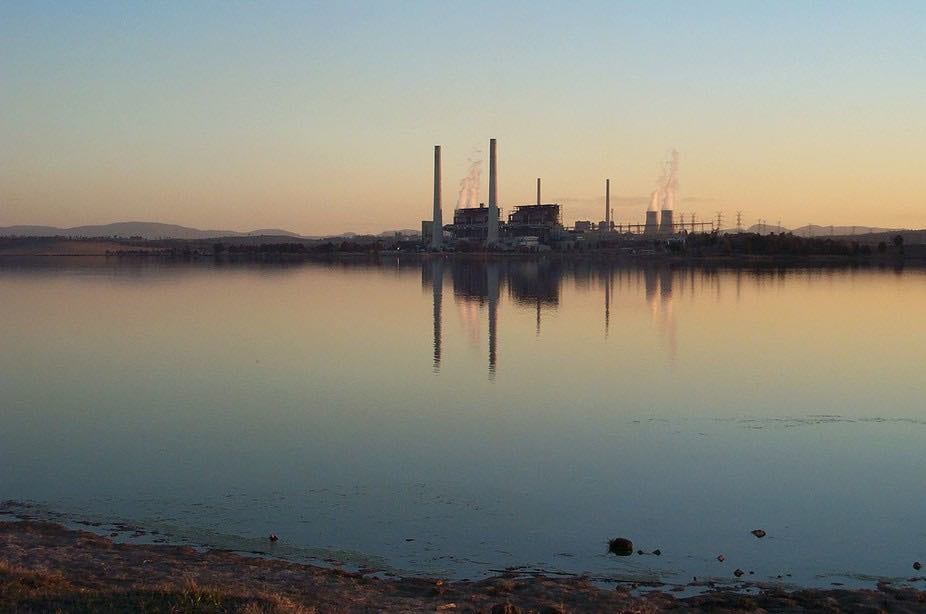The proposed closure date for Liddell, AGL’s ancient and unreliable coal power station, is five years and probably two elections away. While AGL has asked for 90 days to come up with a plan to deliver equivalent power into the market, state and local governments, businesses and households will continue to drive the energy revolution.

At the same time as AGL is insisting they won’t sell Liddell or extend its working life, government debate has returned to the Clean Energy Target proposed by the Finkel Review. Now Prime Minister Malcolm Turnbull is suggesting a redesign of the proposal, potentially paving the way for subsidies to low-emission, high-efficiency coal power stations.
But even if subsidies for coal are built into a new “reliable energy target”, there’s no sign that the market has any appetite for building new coal.
For a potential investor in a coal-fired generator, the eight years before it could produce a cash flow is a long time in a rapidly changing world. And the 30 years needed to turn a profit is a very long time indeed.
We also need to remember that baseload coal power stations are not much help in coping with peak demand – the issue that will determine whether people in elevators are trapped by a sudden blackout, per Barnaby Joyce.
It was interesting that a Melbourne Energy Institute studyof global pumped hydro storage mentioned that electricity grids with a lot of nuclear or coal baseload generation have used pumped storage capacity for decades: it’s needed to supply peak demand.
Solar power is driving down daytime prices – which used to provide much of the income that coal plants needed to make a profit. Energy storage will further reduce the scope to profit from high and volatile electricity prices, previously driven by high demand and supply shortages in hot weather, or when a large coal-fired generator failed or was shut down for maintenance at a crucial time.
There is now plenty of evidence that the diverse mix of energy efficiency, demand response, energy storage, renewable generation and smart management can ensure reliable and affordable electricity to cope with daily and seasonal variable electricity loads. New traditional baseload generators will not be financially viable, as they simply won’t capture the profits they need during the daytime.
The government is now focused on AGL and how it will deliver 1,000 megawatts of new dispatchable supply. In practice, appropriate policy action would facilitate the provision of plenty of supply, storage, demand response and energy efficiency to ensure reliable supply. But the government is unable to deliver policy because of its internal squabbles, and AGL looks like a convenient scapegoat.
Demand response is already working
It is astounding that conservatives can continue to blame renewable energy for increasing prices. They are either ignorant or have outdated agendas to prop up coal. A smart, efficient, renewable electricity future will be cheaper than any other – albeit not necessarily cheaper than our past electricity prices.
Along with other studies, CSIRO’s recent Low Emission Technology Roadmap showed that the “ambitious energy productivity (and renewable energy)” scenario was quite reasonably priced.
While the debate continues to focus on large-scale supply, “behind the meter” action is accelerating through demand response, energy efficiency and on-site renewables.
As I mentioned in a previous column, the ARENA/AEMO demand response pilot has attracted almost 700MW of flexible demand reduction to be delivered before Christmas, and another 1,000MW by December 2018. That’s nearly as much as Liddell could supply flat out. And there’s plenty more where that came from.
Spending a few hundred million dollars to prop up an old coal plant for a few years would shift it to the high-cost end of coal generators. So when prices fall, it would be one of the first coal plants to have to shut down, and among the last to come back online when prices rebound.
This would add to the stress on the facility and the management challenges of operating it – unless it had preferential cheap access to a lot of pumped hydro capacity.
In the medium to long term, we do need to work out how to supply electricity for 24/7 industries but, according to AEMO, this is not urgent. We don’t know how much of that kind of industry will be here in ten years or so, given high gas prices, the age of their industrial plants, and their relatively small scale relative to their international competitors.
On the other hand, they may adapt by investing in behind-the-meter measures. Or they could relocate to sunny places and be part of what the economist Ross Garnaut has called the “low-carbon energy superpower”.
Source: The Conversation. Reproduced with permission.










